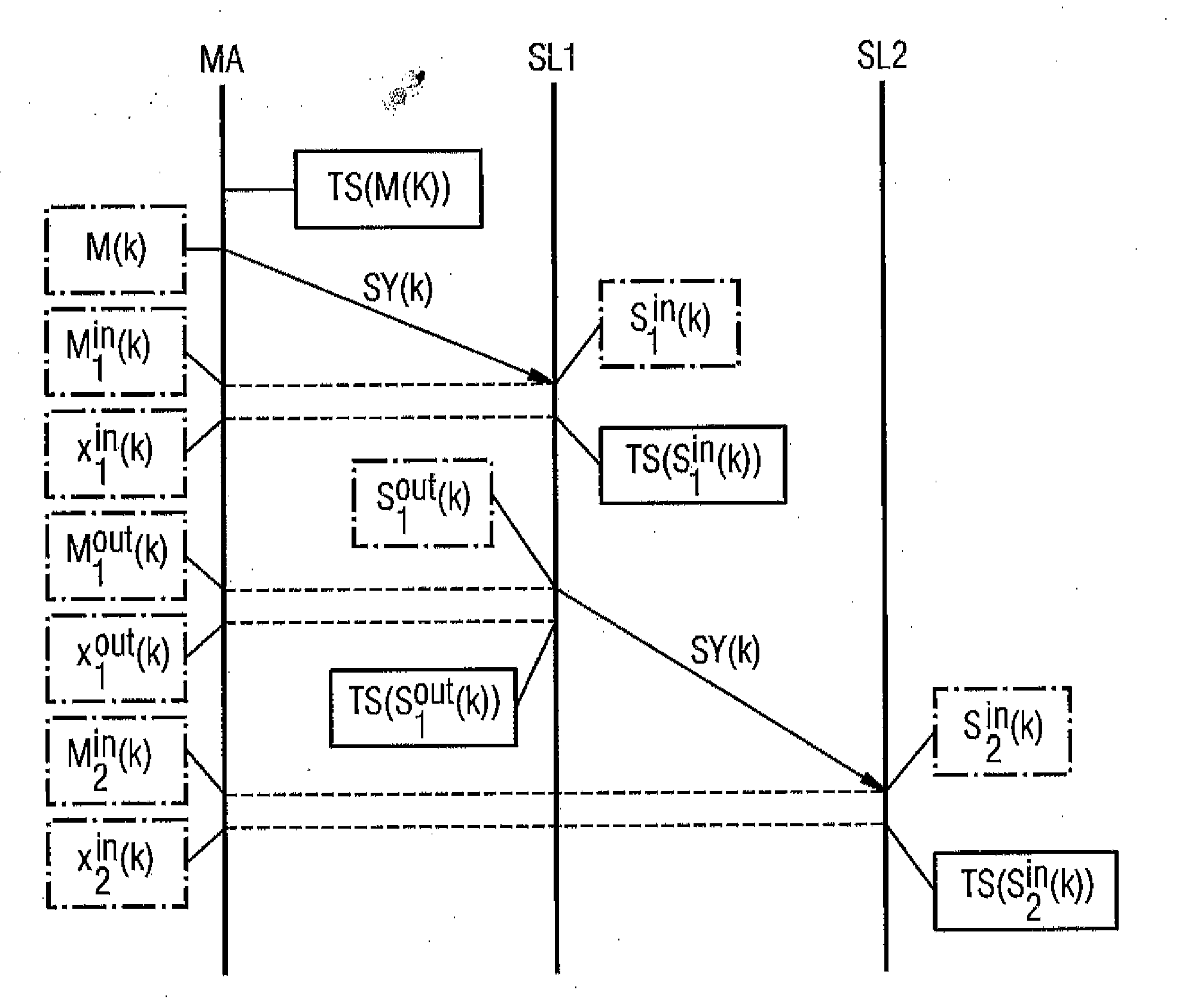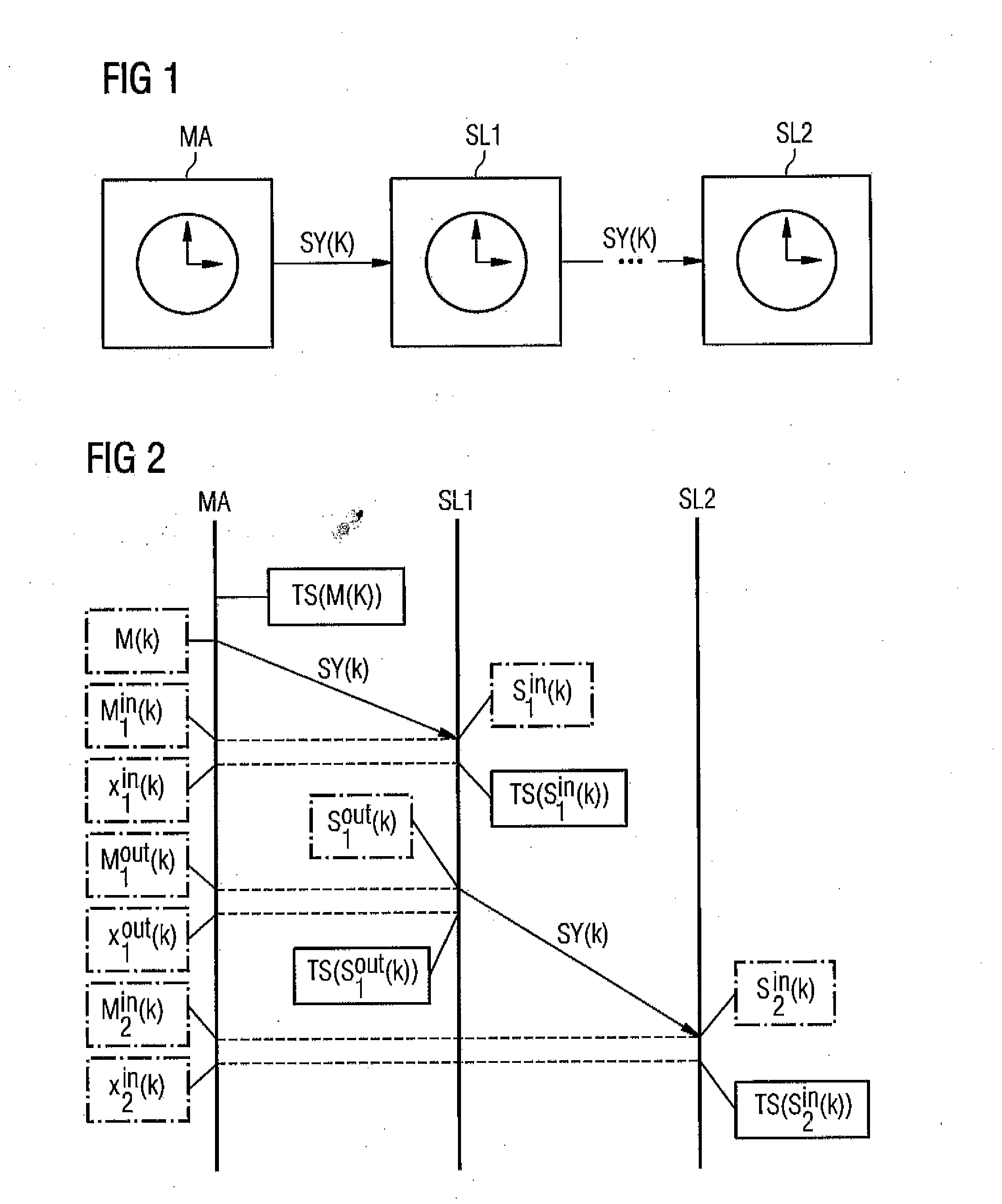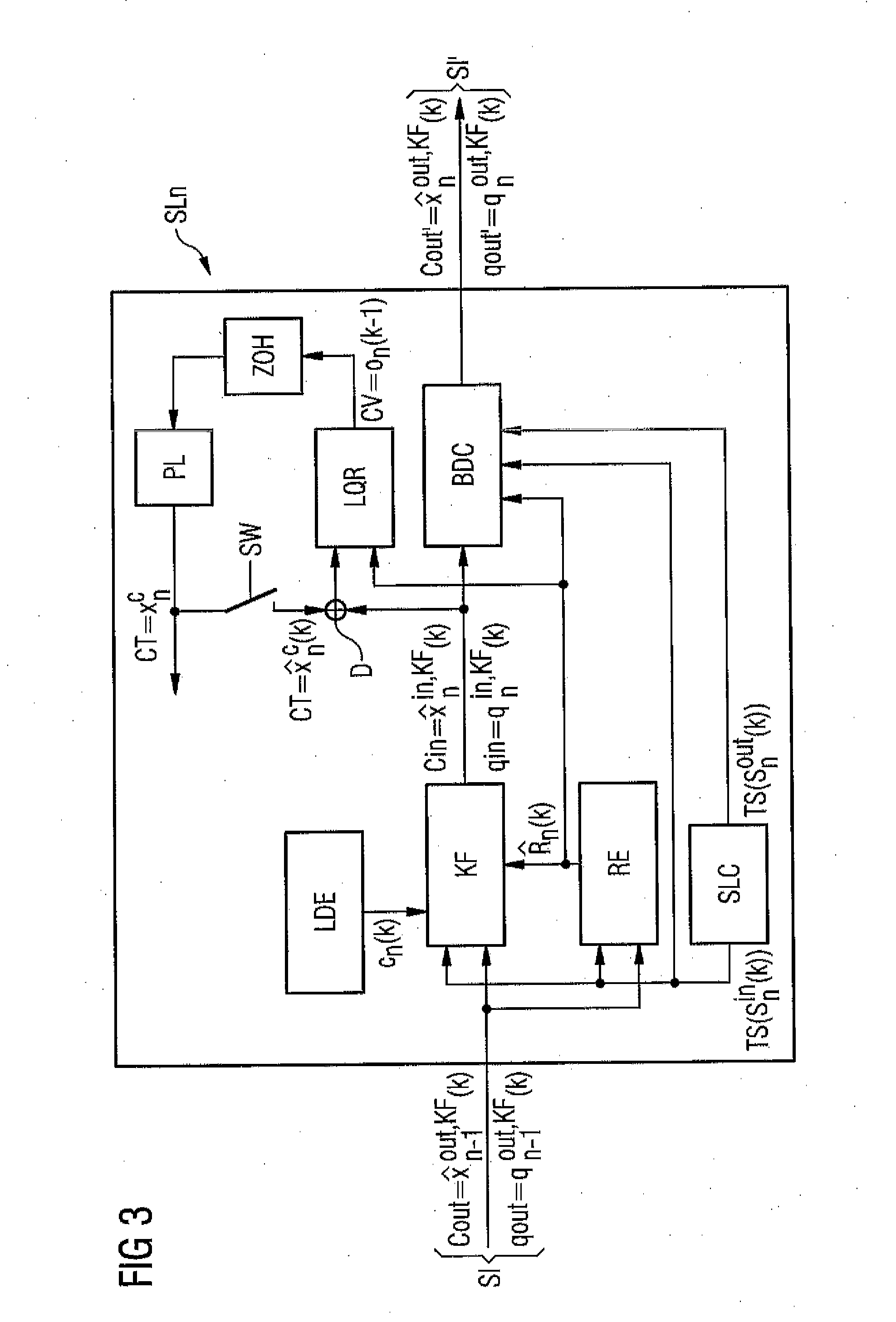Method for Time Synchronization in a Communication Network
a communication network and time synchronization technology, applied in the field of communication networks, can solve the problem that the internal clock of the slave node cannot be synchronized with the reference clock of the master node with sufficient precision
- Summary
- Abstract
- Description
- Claims
- Application Information
AI Technical Summary
Benefits of technology
Problems solved by technology
Method used
Image
Examples
Embodiment Construction
[0032]FIG. 1 shows a chain of nodes in a communication network in which an embodiment of the method in accordance with the invention is implemented. The communication network comprises a first node including a master node MA and a plurality of second nodes comprising slave nodes, where FIG. 1 shows two slave nodes SL1 and SL2. The master node MA contains a reference clock, which generates a reference cycle frequency. On the other hand, the illustrated individual slave nodes SL1, SL2, contain separate internal clocks, which generate corresponding internal cycle frequencies. In the communication network according to FIG. 1, a suitable time synchronization protocol, for example the precision time protocol (PTP) protocol according to IEEE standard 1588, is used to synchronize the internal clock of each slave node with the reference clock of the master node MA. To this end, synchronization messages SY(k) are forwarded from one node to the next node. That is, a synchronization message is ...
PUM
 Login to View More
Login to View More Abstract
Description
Claims
Application Information
 Login to View More
Login to View More - R&D
- Intellectual Property
- Life Sciences
- Materials
- Tech Scout
- Unparalleled Data Quality
- Higher Quality Content
- 60% Fewer Hallucinations
Browse by: Latest US Patents, China's latest patents, Technical Efficacy Thesaurus, Application Domain, Technology Topic, Popular Technical Reports.
© 2025 PatSnap. All rights reserved.Legal|Privacy policy|Modern Slavery Act Transparency Statement|Sitemap|About US| Contact US: help@patsnap.com



